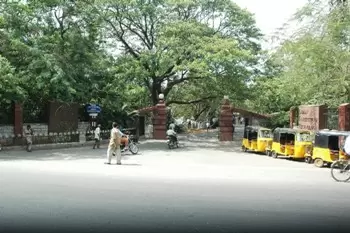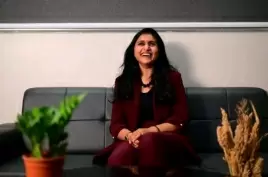What ails the IITs; a call for action

25-October-2011
Vol 2 | Issue 42
I recently gave a lecture to undergraduate students at my alma mater, Indian Institute of Technology-Kanpur. A day before my lecture, the students had arranged for a bull session at night with the residents of one hall, where I stayed for three years during my undergraduate days in the late 1960s.
Most of them complained that after passing the toughest exam in the world, called Joint Entrance Exam or JEE, they felt let down since they were not challenged or inspired by IIT teachers.
 |
|
IITs should spearhead more projects like the recent successful launch of micro-satellite, Jugnu, by students of IIT, Kanpur (In photo, IIT, Chennai)
|
The teachers said the students do not read or attend classes and are just not interested in studies any more. I think the truth lies somewhere in between.
A spate of news items have come up about how the IITs are slipping and that IIT students are not up to the mark.
A deeper analysis will reveal that it is not the students' fault since they are not being guided properly.
In the last couple of years, I have interacted with students not only at the IITs, NITs, management institutes, etc, but also in schools and colleges in rural towns.
And everywhere I have found bright kids who want to do something worthwhile. Being better informed via the electronic media like cell phones, internet and social networks, they know what exists in the world and want to be a part of it.
An entry into the IIT is a passport to success. This is based on the past history of IITians getting plum jobs in IT, banking and other fields.
The JEE is a great filtering mechanism. Passing it is no mean achievement because even the faculty of IITs cannot do it in the time allotted.
Thus saying that most of the students who nowadays get into the IITs are zombies is not correct. Yes, the JEE can be improved by having an extra question paper on languages and an aptitude test.
The reason why the IITs were set up was to create excellent engineers and technologists for India. That basis has failed since the majority of IIT graduates go for non- engineering jobs such as management, banking and civil services.
The teaching in IITs has been deteriorating for the last 20-30 years and is quite mediocre, with most of the faculty not up-to- date in engineering research.
Research and teaching go hand in hand because the excitement of new research is then passed on to the students. Since the research quality in IITs is much below world standards, the teachers are not able to inspire students.
The students therefore look for other challenges and opt for non-engineering jobs.
Four years of IIT education is a sufficiently long time. The fact that only a handful of students who pass out every year opt for engineering or research careers shows that very little of good engineering is taught.
The teenaged brain (most IITians are in this age group) needs a huge amount of inputs to be challenged. Thus the onus is on the teachers to provide it.
And part of that comes by expecting excellence and feedback from students.
This can be in the form of regular homework and exciting hands-on projects which most IIT teachers do not give and, even if that is given, it is never graded and supervised properly. Thus the student never knows whether he or she has learnt anything in the course.
Almost in every IIT, around 50 percent of faculty positions are vacant. The government in its wisdom thinks giving higher pay will help attract good faculty.
This is a myth because great teachers are not attracted only by pay but by the scholarship environment of doing good research and teaching. Thus this is an egg and chicken story. Great institutes produce a good number of great researchers, some of whom also become great teachers.
Also some of the problems with IIT education have been created by IT companies. In the past, these companies have heavily recruited from IIT campuses.
In fact, not long ago there used to be a saying "anything that moves in IIT gets a job in Infosys"! This resulted in making most students complacent and bunk classes since they knew they would be taken by IT companies, irrespective of their grades. With this attitude it becomes very difficult for students to learn anything.
It is not that all the existing teachers are bad. Quite a few have inspired students to do great things.
A recent example is of micro satellite, Jugnu, designed and fabricated by undergraduate students at IIT Kanpur that was recently launched successfully by the Indian Space Research Organisation (ISRO). About 35 students worked day and night for three years to produce it. Besides, most of the students working on it, after graduation, have opted for careers in engineering and start-ups.
But these efforts are few and far between. Imagine what many more Jugnu-type efforts in different fields could do for the country. It will not only produce excellent technologies but also create scientists and engineers that India really needs.
I also feel the IIT alumni should lecture students regularly. There should be a mechanism whereby IITs actively seek and invite successful alumni to lecture at institutes on a regular basis.
In survey after survey, IITs are nowhere in the top 200 universities of the world. It is a shame because some of its alumni are top achievers all over the world.
What is needed is great teachers, researchers and inspirers to egg these students on to do good engineering so that they can contribute to the society and nation.
Anil K. Rajvanshi is director of the Pune-based Nimbkar Agricultural Research Institute (NARI). - IANS














